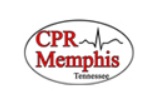Example of Microbiology Unknown Lab Report
Call Us Now
Get the Best CPR Class in Memphis Today!
Example of UNKNOWN LAB REPORT
Alexis Welker
Biology 203
Introduction
Call Us Now
Get the Best CPR Class in Memphis Today!
An important part of medical treatment is the bacterial identification. Many treatments are dependent on the identity of the microbe causing the problem. Once the microorganism is isolated scientists can examine its structures and determine how it can function. Bacteria are mostly known for causing disease or harming the health of humans, but not all bacteria should be considered like this. Some are essential for our existence and to keep our food chain from collapsing. Other bacteria have been beneficial to humans; that are found in some of our favorite foods. Being able to culture, isolate, and identify an unknown bacteria is one of the cornerstones in microbiology BIO 203, as well as the ability to use different techniques to distinguish and identify different bacteria.
Materials and Methods
An unknown labeled 123 was given out by the lab instructor. An isolation streak was done on a Nutrient Agar, and then was placed into an incubator at 37 degrees for two days to grow. Once the incubation was completed two different colonies showed growth on the the Nutrient Agar plate. The different colonies were then both isolated onto two different Nutrient Agar plates and placed into the incubator at the same temperature for another two days. After being taken out of incubation both of the plates were labeled. One was labeled unknown streak A and the other was labeled unknown streak B. Then a gram stain was done on both unknown streak A and B. A microscope was then used to identify whether unknown streak B was gram-negative or gram-positive. Unknown steak B had purple circles which were gram-positive. Unknown streak A showed evidence of contamination during the gram staining process. A gram-negative tube was given by the instructor and another gram stain was done. Unknown streak A was red and had rods, therefore it was gram-negative. These tests were done and followed by the help of the McDonald’s lab manual.
Table 1 lists the test, purpose, reagents, and results of Unknown Streak A
All of the following tests were performed on this unknown
1) Urea test
2) Mannitol test
Table 2 lists the test, purpose, reagents, and results of Unknown Streak B
All of the following tests were performed on this unknown
1) Mannitol test
2) Urea test
3) Nitrate test
| TEST | PURPOSE | REAGENTS | OBSERVATION | RESULTS | |
| GRAM STAIN | To determine the gram reaction of the bacterium | Crystal violet, iodine, decolorize, safranin | Red/pink rods | Gram negative rods | |
| UREA | Detects the enzyme urease | Urea broth tube | Color changed to pink | Positive for Urea test | |
| MANNITOL | To determine if it produces acid | Mannitol broth tube | Color changed to a pink | Negative for producing acid | |
Table 1: Unknown A
Table 2: Unknown B
| TEST | PURPOSE | REAGENTS | OBSERVATIONS | RESULTS |
| GRAM STAIN | To determine the gram reaction of the bacterium | Crystal violet, Iodine, decolorize, Safranin | Purple circles | Gram positive results |
| UREA | Detects for the enzyme urease | Urea broth tube | Color changed to a red/orange | Results were negative |
| MANNITOL | To determine if it produces acid | Mannitol broth tube | Broth turned yellow | Positive for producing acid |
| NITRATE | Broth tube that tests for nitrate reductases | Nitrate broth tube, Reagents A&B, zinc | No results when reagents A&B were added, once zinc was added broth changed to color red | Negative results, zinc reduced any nitrate remaining in the tube. |
Discussion/Conclusion
Unknown A also known as Proteus vulgaris was difficult to find. To start this process an isolation streak had to be done. Once the isolation streak had been done, several gram stains had been attempted, but since there were some contaminations in this process it made the bacteria a bit more difficult to find. After many contaminated gram stains the gram negative was given by the instructor in a test tube. Finally a clear gram negative with rods has appeared on the slide. Using a sterile inoculating loop a few drops of Proteus vulgaris was taken and placed in a Urea broth tube as well as a Mannitol broth tube. These tubes were incubated at 37 degrees for two days. After the incubation was completed the tubes were thoroughly examined. The mannitol test came out negative because it failed to produce acid. The outcome of the Urea test was positive because the color of the broth changed to pink. This is considered a positive reaction.
Unknown B or also known as Enterococcus faecalis was much easier to find than Unknown A. As the McDonald lab says the first step is an isolation streak. Once the isolation streak had been completed the next step would be a gram stain. The first try at this gram stain went perfectly, but just to be safe another gram stain was performed. The second gram stain came out much more clear and had better results. The results that were seen on the slide were a clear purple positive with circles as well as noticeable colonies. The next step was to use a sterilized inoculating loop that took a bit of Enterococcus faecalis and was dipped into a Urea broth tube, Mannitol broth tube, and as well as Nitrate broth tube. These test tubes were then placed in the incubator at 37 degrees for two days. The Urea test came back negative with no color change to the broth. The Mannitiol test produced acid, which is considered a positive reaction. When the reagents A and B were placed into the Nitrate tube there was no change. Once a pinch of zinc was added to the tube it immediately turned red which means it produced acid and that is a negative reaction. All techniques and instructions are done as laid out in the LAB MANUAL BIO 203 by MCDONLD.
Proteus vulgaris is found in the human intestinal tract, soil, water, and plants. These organisms usually do not grow well in the intestinal tract but can act as possible pathogens that cause infant diarrhea and 29% of all urinary tract infections. This bacterium has been connected with wound infections due to direct contact. This bacterium has also been linked to food spoilages, such as fresh meat, poultry, and seafood. This bacterium is actively motile and swarming behavior. To treat this bacterium you will need ampicillin and aminoglycosides. (Tortora, Gerard J. pg 311)
References:
1) Tortora, Gerard. J. Microbiology An Introduction eleventh edition. Glenview, IL, 2013, 2010, 2007. Print
2) McDonald, Virginia. Lab Manual for General Microbiology. St. Louis Community College at Meramec. April 2011.









